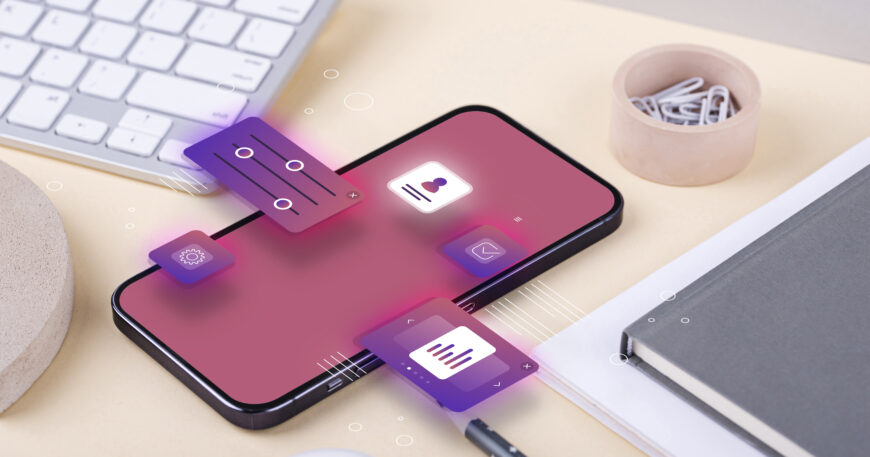Regardless of whether your aim here is to generate a new idea, a solution or make money in the field of mobile apps, developing an iOS app is usually fruitful. This task may look impossible at the outset but with the correct strategy, any person can be able to learn how to create an app for iPhone. This article describes the vital steps in how to build an iPhone app,from scratch till it is ready to be put up for download in the app store.
Step 1: Conceptualize Your Idea
In developing an iOS application, the initial task you have to perform will include writing down the purpose for which you intend to build the application. Begin with a problem or a need that your application will be finding. Ensure you carry out some market research on your target audience to know if your idea is practicable and that there is a market for it. Focusing on your target market will help in deciding the features and purposes of your app. One should also investigate the market to find out the competitors’ medical recording apps that are currently available and how one’s application will be different or even better than the competitors’.
After coming up with a solid idea, highlight the most important features of your app. This is what one should work on first and form what one would have. This would help you remain focus to what should be delivered to your users in terms of value.
Step 2: Design the User Interface (UI)
After designing your app, the next step is to design its user interface (UI). UI is important because it determines how users interact with your app. Apple puts a lot of emphasis on design and ease of use, so it is important to create an interface that is clear and attractive.
Start by drawing a wireframe or sketch of each shape. Think about how users will navigate your app and how each part will be displayed. Tools like Sketch, Adobe XD or Figma can help you create detailed UI designs. Remember to make the design simple and easy to use, focusing on what gives users the most value.
Step 3: Learn the Basics of iOS Development
Before you start building your app, you’ll want to learn the basics of iOS development. Understand the programming languages and tools used to update iOS applications. Swift is the primary language for iOS development, a powerful and easy-to-learn language developed by Apple. Alternatively, you can also use Objective-C, although Swift is the best choice for most developers.
You should also learn how to use Xcode, Apple’s integrated development environment (IDE). Xcode provides all the tools you need to develop an iOS app, including a code editor, an interface builder, and a simulator to test your application. Apple provides extensive documentation and tutorials on Swift and Xcode to make it easy for beginners to get started.
Step 4: Start Coding Your App
With your design and basic understanding of iOS development, it’s time to start writing your app. First set up your project in Xcode, choose an appropriate template for your application structure. Then, implement the key features you wrote down, focusing on one aspect at a time.
As you write your code, don’t forget to test your app from time to time using Xcode’s built-in simulator. This allows you to see how your app performs on different devices and catch bugs and issues earlier. It’s also a good idea to test your app on a physical device, such as an iPhone or iPad, to make sure it works as expected in the real world.
Step 5: Test and Debug Your App
After you build your app, thorough testing is essential to ensure a smooth user experience. Testing includes checking for bugs, performance issues, and compatibility with different devices and iOS versions. Xcode’s testing tools allow you to run automated tests, monitor your app’s performance, and troubleshoot issues that arise.
Also, follow beta testers to provide feedback about your app. This report can help identify issues you may have missed and improve the overall user experience.
Step 6: Submit Your App to the App Store
After testing and optimizing your app, the final step is to submit it to the App Store. To do this, you need an Apple Developer account, which requires an annual fee. Before submitting, make sure your app meets all Apple guidelines and requirements. This includes following Apple’s design principles, ensuring your app is bug-free, and providing accurate metadata and screenshots.
Once your app is ready, use Xcode to submit it to the App Store. Apple’s review process takes several days, and your app will be reviewed for quality and compliance. If your app is approved, it will be available for download on the App Store, where it can be used by millions of users around the world.
Conclusion
Learning how to create an app for iPhone is a step-by-step process that requires careful planning, design, proofing, and testing. By following these steps and taking the time to learn the necessary skills, you can build an iPhone app that meets your goals and provides value to your users. Whether you’re building an app for personal use or planning to launch the next popular product on the App Store, this guide will give you the foundation you need to develop an iOS app successfully.



